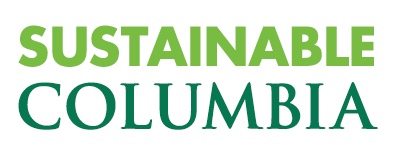Oceanographer Studies Clues to Global Warming, Develops Educational Tools for Science
Sonya Dyhrman’s interest in marine biology began when she was a child, exploring tidal pools with her grandfather on the coast near her Tacoma, Washington home. For a science project in high school she studied toxin-producing microbes in Puget Sound that accumulate in shellfish during parts of the year and can cause paralysis and even death in humans if those shellfish are consumed.
Now a microbial oceanographer at Columbia’s Lamont-Doherty Earth Observatory and an associate professor in the Department of Earth and Environmental Sciences, her research focuses on tiny microbes in the ocean that play a role in the earth’s climate.
These phytoplankton, or algae, consume massive amounts of carbon—a byproduct of burning fossil fuels—and release oxygen, the process known as photosynthesis. Higher levels of carbon dioxide in the atmosphere have made the oceans more acidic, which could have a detrimental impact on marine life.
“We’re used to thinking about the importance of green photosynthetic plants like grass and trees to climate,” Dyhrman says. “People are less used to thinking about the very important role of oceans. Microscopic organisms in the ocean make the planet habitable for humans. Every other breath you take comes from microbes in the sea that produce oxygen.”
Dyhrman came to Columbia in January from the Woods Hole Oceanographic Institution. She was attracted by Lamont’s unique interdisciplinary approach to environmental science and the opportunity to mentor Columbia undergraduates, graduate students and post-doctoral researchers.
She was part of a team of scientists from 12 countries that sequenced the genome of a particular type of algae, Emiliania huxleyi, or Ehux. That seven-year effort revealed variable genes that mix and match with a set of core genes to allow the free-floating phytoplankton to adapt to different environments. She recently won a National Science Foundation grant that will let her continue her study of these and other algae and how they are influenced by ocean acidification.
Dyhrman spends about two months of every year at sea, most recently on board the R/V Kilo Moana—a research vessel in the University-National Oceanographic Laboratory System fleet—analyzing phytoplankton samples taken in the North Pacific near Hawaii.
Columbia has long been a leader in climate-related research. Scientists at Lamont and theEarth Institute have measured changes in polar ice and created computer models that predict temperature trends and gauge rising sea levels and extreme weather patterns such as hurricane Sandy. Researchers at the Engineering School were part of a study that showed how certain volatile gases promote cloud formation. The International Research Institute for Climate and Society works with developing countries to help them anticipate and manage climate-related events such as droughts, floods and heat waves. Researchers at the Mailman School of Public Health are studying the health effects of climate change from Delhi to New York City.
Dyhrman’s work adds important insight into the complex puzzle of global warming. The algae she studies are found in oceans around the world. In addition to producing oxygen, their elaborate calcium carbonate shells reflect light and influence the earth’s temperature, and they are an important source of food for ocean fish. By decoding their genome, scientists can better understand how different strains are influenced by changes in the environment and how they influence the earth’s systems as a whole.
Besides her passion for research, Dyhrman is committed to education, particularly keeping young girls interested in math and science. “I had this very special teacher in high school whose passion shaped my whole career path,” Dyhrman says. “It’s important for me to give back.”
She created the oceanography component of an educational website called Whyville, which is especially popular with 8- to 12-year-old girls. “It’s a way to reach this often hard-to-reach demographic,” she says. More than 1.2 million children have participated in Whyville’s oceanography activities where they can explore virtual environments, look at samples under a microscope and ask questions of a real-life scientist.
With Lamont research associate, Sheean Haley, Dyhrman also developed a multidisciplinary curriculum for fifth graders called the Artistic Oceanographer Program, which combines art with short science lessons and observation. After seeing slides of phytoplankton under a microscope, for example, students are asked to design their own algae. School districts in seven states have adopted the curriculum.
In a way, Dyhrman says, her research is a continuation of what she was doing in high school, but with more advanced tools. “I can now do things that I always wanted to do,” she says. “I’m passionate about microbiology in the context of how the earth works.”
